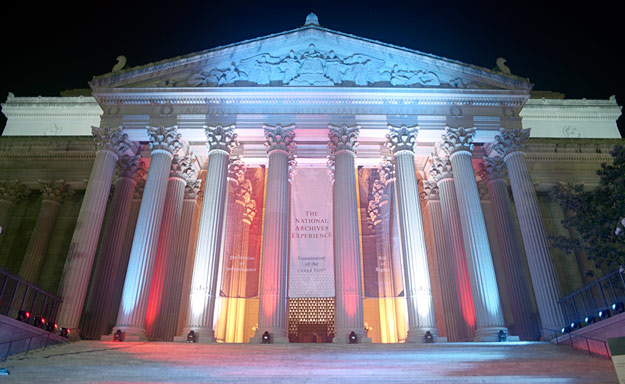Rush for 1940 Census Records

Archives bends under rush for 1940 census records; share your family stories
By Bill Dedman Investigative Reporter, msnbc.com
April 2, 2012, 10:26 am MSN.com
Update: The National Archives had said it wasn’t sure whether its computers could handle the load, and delays were reported. In Springfield, Ohio, Facebook user Val Lough commented on our page: “It’s very sweet of them to put all of these records on line. It would be even nicer of them to make the records VISIBLE. None of them will download, I have a browser window opening that’s ‘loading’ the documents and has been for about 20 minutes. You might want to find out what their issues are. It would be faster to mail a public records request to the National Archives.” Many others are tweeting about delays. The National Archives says it is putting more servers online to handle the crush. (Hey, you’ve waited 72 years to see these records, so what’s a little more time?)
A time capsule from 1940 was opened on Monday at 9 a.m. ET, and we invite readers to share what they find. If you use the new records to find information about the loved or lost in your family, please post a note in the comments below or on our .
U.S. Census records for individuals from April 1, 1940, protected until now by a 72-year privacy law, are now public for the first time, revealing details about millions of Americans from that day, as the country lingered in a Great Depression, still a year away from entry into war in Europe and the Pacific.
“I’m so excited!” Gary Robert Del Carlo of Martinsburg, W.Va., posted on Facebook. “Maybe for the first time ever, I’ll be able to find out something about my father. All I have is my birth certificate with his name, date of birth, state born in, and that he was in the Army stationed in Washington State. His military records burned up in St. Louis in a fire in 1973. They would have told me a lot. Wrote for his birth certificate, and there was no records of his birth. I have done nothing but hit brick walls every which way I turn. I’m praying I find something useful tomorrow, anything.”
NPR describes the release as the “Super Bowl for Genealogists.” Librarians around the country are ready to provide assistance. At the Family History Library in Salt Lake City, the staff will be serving cake and providing help.
When the 120,000 census takers counted 132,164,569 people living in the country on that day, the information collected included the address, whether the house was owned or rented, value of the home or monthly rent, is it considered a farm, names of adults and children, familiy relationships, sex, race, age, place of birth, citizenship, residence five years earlier, education. And for a small subset of people, about 5 percent, they were asked about place of birth of mother and father, language spoken in the home as a child, veteran status, wars served in, Social Security status, occupation, employment status, occupation, number of weeks worked in 1939, income and, for women, whether they had been married more than once, age at first marriage, and number of children ever born.
There is a catch. As the records go online, they can’t be searched by name. For a city it’s helpful to know an exact address, but often you can work with a neighborhood (near the corner of Canal and Varrick streets in New York City). Your public library may have old city directories or telephone directories from that period, allowing you to look up people by name to find an address. For a rural area, you need to know at least the county and the name of the town or township.
Genealogists, librarians and volunteers will begin the work of indexing the records, which eventually will allow searches by name. Two sites, the commercial Ancestry.com and the Mormon Church’s FamilySearch.org, have announced plans to provide indexes to their customers as quickly as possible, with some images going online on Monday. Update: FamilySearch started putting images from the Census files online, beginning with Delaware, then Virginia.
But for most of the country, for now, you must know at least an approximate address to get started. You use that address to find an “enumeration district,” which in a big city might be only a few blocks, and would be a larger area in a small town.
Another approach, for those interested in a specific place, is to look at all the records for your block or street. If your area was settled in 1940, who lived there then, and what were their lives like?
Your goal: With that district number, you can look on the Census website at the online copy of the form filled out by the census taker in 1940. In 70 years, it has gone from paper to microfilm to computer.
Here are resources to help you with the search (links open in a new window), though as with most things in life, the key is: Ask a librarian.
•Most important page No. 1: Step-by-step help from private researchers with free aids to help you find the enumeration district map for a particular address
•Most important page No. 2: A Census explainer on starting your search.
•The home of the 1940 Census
•A Census page with general information on the 1940 release
•A copy of the 1940 Census form (PDF file) that you can fill in when you find information
•Census aids to finding information
•Ancestry.com, a commercial service for genealogists
•FamilySearch.org from the Church of Jesus Christ of Latter-day Saints
•Tell us what you find: